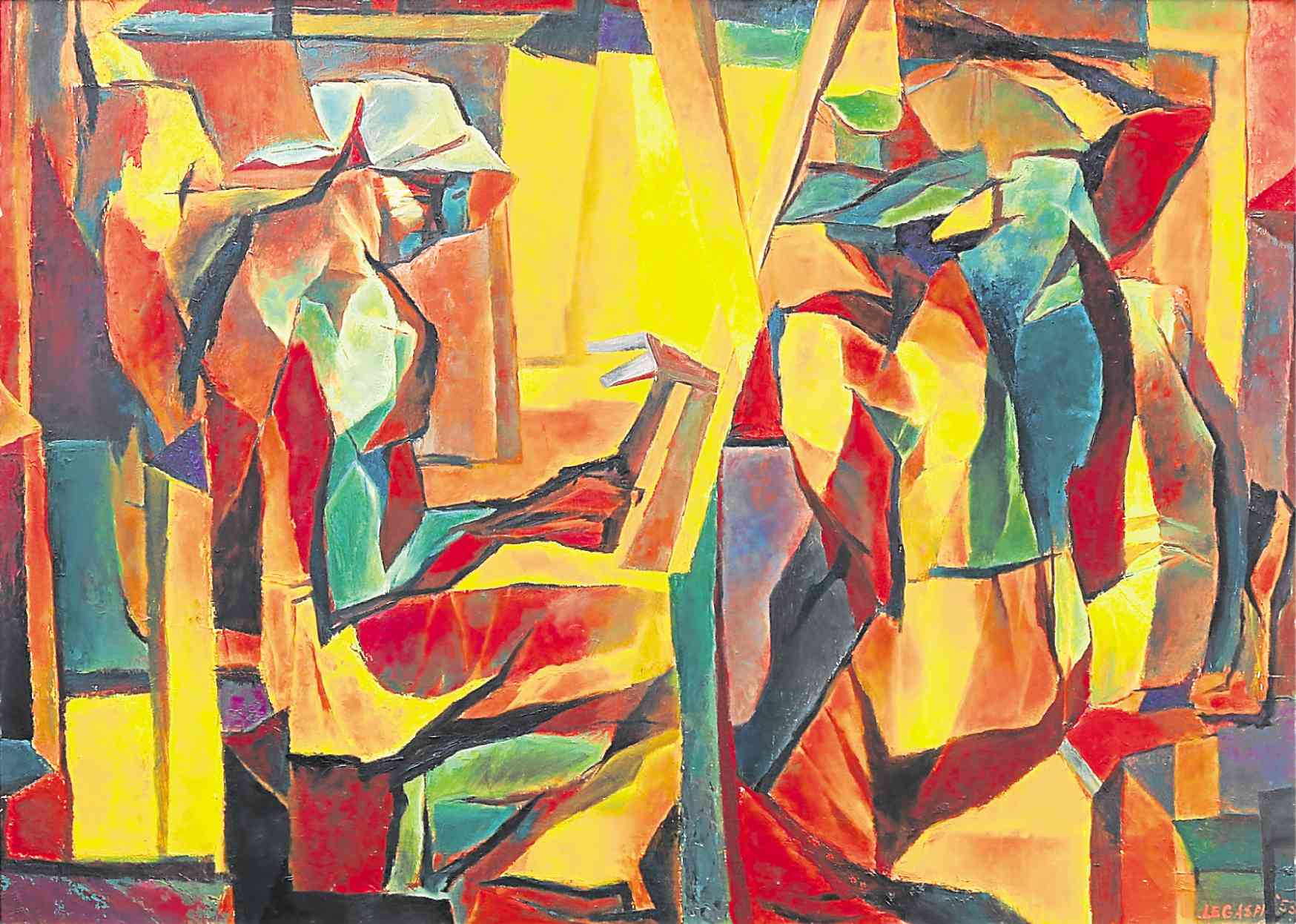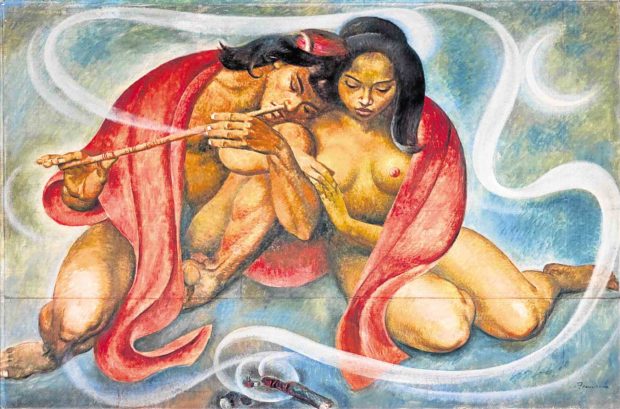
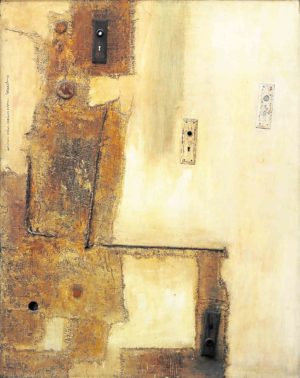
For its upcoming Magnificent September Auction 2018, León Gallery will bid out Carlos “Botong” Francisco’s magnificent mural-size work, “Nose Flute,” showing an Ifugao man and woman, he blowing a flute through his nose, resting his head on her, who puts her ear near the instrument, and the music it emits finds objective correlative in the mountain mist dreamily ensphering their seminude figures.
Bidding starts at P28 million.
“This Botong [work] is of a subject, quality, condition and size that is extremely rare and the provenance—impeccable!” said León Gallery director Jaime Ponce de León. “Perhaps there may not be a Botong in the near future that will come close to the attributes of this.”
León’s Magnificent September Auction catalogue calls it “The Last Epic Botong.”
“Almost a mural-size work, the ‘Nose Flute’ measures an astounding 4×6 feet, making the painting most possibly, the last Botong Francisco of such epic proportions to go to auction,” wrote Lisa Guerrero Nakpil in the catalog.
Aside from its size, the work is also notable for its medium—oil on double canvas, joined at the seams. Salvador “Badong” Juban, Francisco’s last assistant, said the double canvas, sourced from Gandara in Binondo, was necessary to accommodate the scale of the master’s works.
“Botong (1912-1969) is widely regarded as Asia’s Diego Rivera, because of his powerful yet lyrical murals depicting a pantheon of heroes as well as the heroic everyman,” wrote Guerrero Nakpil. “He carefully selected the avatars in creating a unique iconography, preferring pre-Spanish Filipinos, or those that stayed true to their cultural identities unsubjugated by colonial powers.”
The work has been authenticated by Juban and Carmen Francisco Whalen, Botong’s eldest daughter. Writing from the United States in 2012, the latter stated, “I can tell that it is my father’s style—the color, the composition and the subject matter. It is so good to hear that there is still great enthusiasm in reviving and carrying on the legacy of my father. He was a great man.”
Joya’s ‘Carnival’
Another important piece is National Artist José Joya’s 1961 oil-on-canvas “Carnival,” which belongs to the stylistic period that produced the works that he made for the 1964 Venice Biennale.
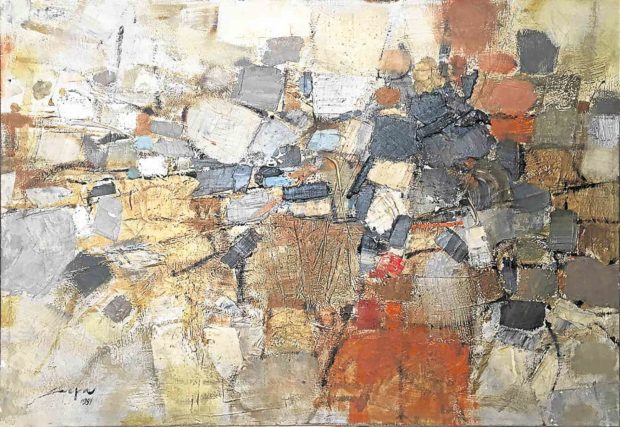
Accompanied by a certificate issued by the artist’s sister, Josefa Joya-Baldovino, “Carnival” is along the line of the “introspective abstractions” of Willem de Kooning, Mark Rothko and Jackson Pollock. Like the Venice works painted in semi-automatist manner, it is a painting that, according to art critic Eric Torres, belongs to abstract expressionist works that are “excessive not so much of statements as of states of feeling.”
“(‘Carnival’) has the qualities of the best Joya,” Ponce de León said. “The impasto, the correctness of the period, and the pedigree make it just the Joya to have.”
Bidding starts at P12 million.
In his mixed-media “Various Voices, Various Rooms” (1955), National Artist J. Elizalde Navarro pursues unremitting abstraction, flattening the picture space to focus on the formal elements of color and shape. It has a starting price of P1.8 million.
Also a significant piece is National Artist Cesar Legaspi’s 1953 oil-on-masonite board “Workers,” in which the various hues of red and orange give the painting a warm, palpable glow. Floor price is P1.8 million.
“Finding a Legaspi from the early 1950s—or the Philippine Art Gallery period—is like finding a needle in a haystack,” Ponce de León said. “It is just close to impossible.”
Another significant find is a painting by Manuel Rodriguez Sr., the father of Philippine printmaking who died last year at 105 years old.
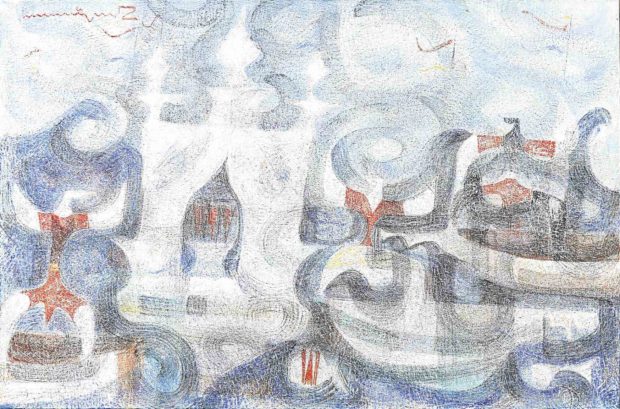
“River Festival” is a 1962 oil-on-canvas painting that was exhibited by the Department of Foreign Affairs during its Asian Writers’ Conference in 1962.
It came from the owner himself, Canadian writer Ian McLachlan, who attended the conference and exhibit and was befriended by then Vice President and Foreign Secretary Emmanuel Pelaez.
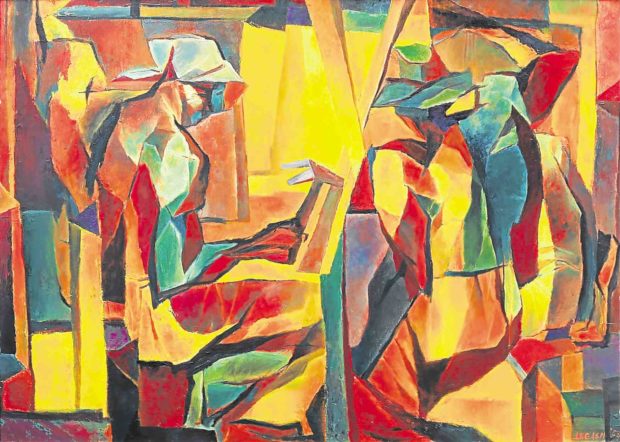
An essay by McLachlan’s quoted Pelaez, “And this one by Manuel Rodriguez; there’s so much life in it and a lot of atmosphere. I’ve always lived by the ocean and I can feel the rhythms of the sea in this.’” Mclachlan wrote that he was told by the vice president: “‘You should go and visit him (Rodriguez) in his studio; maybe he will sell it to you.”
Now in his 80s, McLachlan is a poet, fictionist and playwright. Notably he wrote “The Seventh Hexagram” that shared with Michael Ondaatje’s “Coming through Slaughter” the inaugural Books in Canada First Novel Award in 1976. (Ondaatje is the author of “The English Patient.”)
Formal bidding will be held on Sept. 8, 2 p.m., at Eurovilla 1, Rufino and Legazpi Sts., Legazpi Village, Makati City.
Auction preview on Sept. 1-7, 9 a.m.-7 p.m. Visit Leon-gallery.com.

